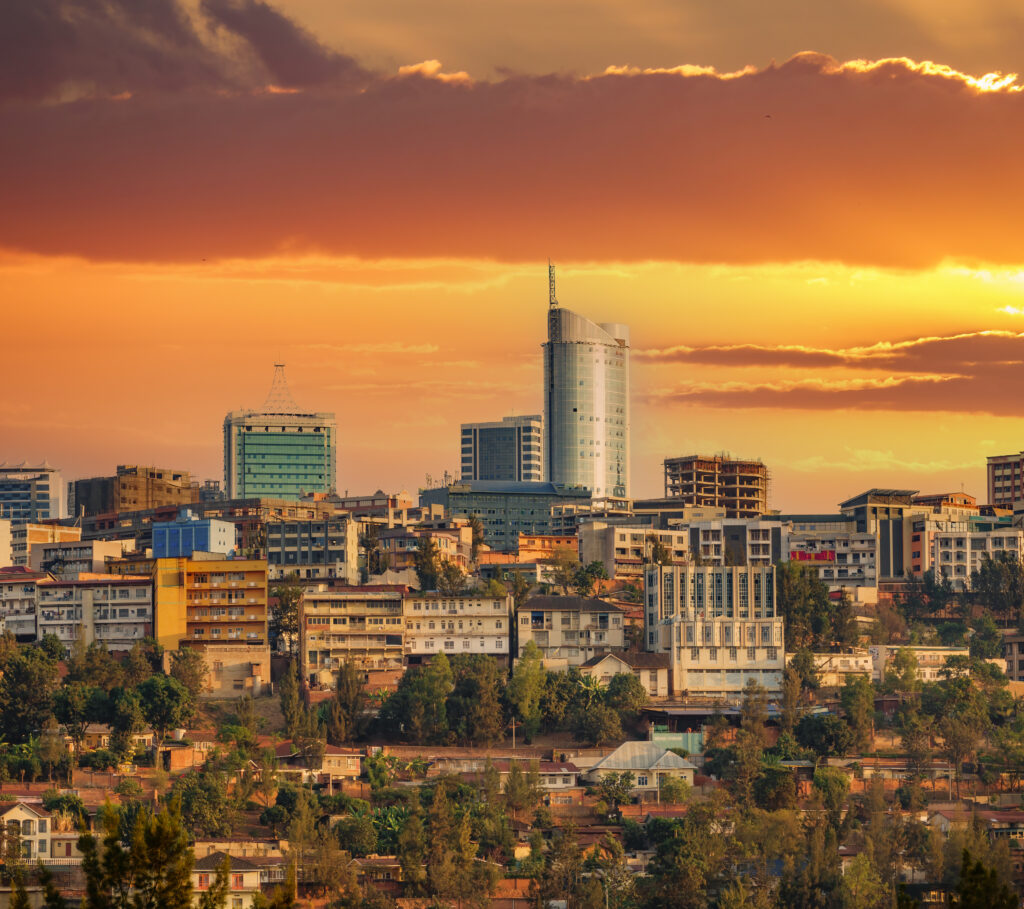A Vital Imperative in Rwanda’s Marburg Virus Outbreak
Healthcare workers in Rwanda are disproportionately affected by the ongoing outbreak of Marburg virus disease, which is highly virulent despite its relatively low case fatality rate. How can these medical professionals best protect themselves?
Published October 30, 2024
By Syra Madad, D.H.Sc., M.Sc., MCP, CHEP and Nahid Bhadelia, MD, MALD
Academy Public Health Contributors

Image courtesy of F.C.G. – stock.adobe.com.
As Rwanda faces its first outbreak of Marburg virus disease (MVD), it stands at a pivotal moment. The country has confirmed 65 cases of Marburg as of October 28, 2024, with 47 recoveries and 15 deaths, a relatively low case fatality rate (CFR) of 23%. This is a testament to the strength of Rwanda’s healthcare system, which has earned a reputation as one of the most resilient and high-quality systems in Africa. Although this may be Rwanda’s first MVD outbreak, the country is not a stranger to the threat posed by viral hemorrhagic fevers (VHFs). It has had to maintain vigilance during recent Ebola Virus Disease outbreaks in neighboring Democratic Republic of Congo.
Yet, despite these strengths, the current outbreak has highlighted an urgent vulnerability: the safety of healthcare workers. Over 80% of confirmed cases are among healthcare workers, a statistic that underscores the pressing need to enhance protections for those on the front lines of this and future outbreaks.
Rwanda’s Health System: A Success Story Under Strain
Rwanda’s healthcare system has made impressive strides since the country’s recovery from the 1994 genocide. Over the past three decades, Rwanda has transformed its health infrastructure to become a leader in healthcare delivery among low-income countries in sub-Saharan Africa. One of the cornerstones of Rwanda’s success is its Mutuelles de Santé, a community-based health insurance scheme that covers over 90% of the population, making healthcare more accessible and affordable for the vast majority of citizens. Through sustained investments in rural healthcare posts and the decentralization of services, Rwanda has significantly improved healthcare accessibility, particularly for those in remote areas.
These advances have contributed to Rwanda’s remarkable achievements in public health. It is one of the few low-income countries to have met the United Nations Millennium Development Goals related to maternal and child health. Rwanda has also seen significant reductions in the burden of diseases such as malaria, tuberculosis, and HIV/AIDS. During the COVID-19 pandemic, the country’s proactive response and efficient vaccine rollout enabled it to vaccinate over 82% of its population, setting a benchmark in the region and surpassing many of its peers in sub-Saharan Africa.
However, the Marburg outbreak has brought a new set of challenges. The virus, which is transmitted through direct contact with the bodily fluids of infected individuals and can also spread through contaminated surfaces and materials, is highly virulent and shares many similarities with Ebola. Despite Rwanda’s impressive healthcare achievements, the high rate of nosocomial transmission, where infections spread within healthcare facilities, reveals gaps that must be addressed to protect healthcare workers.
Nosocomial Transmission: A Threat to Frontline Workers
The current Marburg outbreak in Rwanda highlights the risks healthcare workers face in outbreaks of VHFs like MVD, particularly when it is not at forefront of clinical suspicion. Nosocomial transmission, or the spread of the virus within healthcare settings, is not uncommon during VHF outbreaks, but it is particularly dangerous for healthcare workers. In Rwanda, the virus has spread primarily in two hospitals, resulting in a disproportionately high number of infections among healthcare professionals.
This is not unique to Rwanda. Across the continent, healthcare workers have been at the epicenter of VHF outbreaks, often working under extreme pressure, sometimes with limited resources. However, Rwanda’s healthcare system, bolstered by strong government commitment and partnerships with international organizations, is better equipped than most to respond to such a crisis. Access to personal protective equipment (PPE) doesn’t seem to be a limiting factor in this outbreak and is further supported by partners like the World Health Organization during this current outbreak.
Yet, despite these resources, healthcare workers remain at risk. This points to the fact that while access to PPE is essential, it is not the only solution. Comprehensive infection prevention and control (IPC) measures, proper training, surveillance and monitoring, and a culture of vigilance within healthcare settings are equally crucial to stopping the spread of the virus among those on the front lines.
Recommendations to Protect Healthcare Workers
Rwanda’s situation is neither unique nor a one-off. The threat posed by viral hemorrhagic fevers like Marburg can emerge anywhere. Any country, regardless of its healthcare infrastructure, can face such outbreaks. The risk of nosocomial transmission, the dangers to healthcare workers, and the broader community impact are universal concerns. The recommendations to strengthen healthcare worker protection in Rwanda extend beyond its borders; they are vital for any nation vulnerable to similar infectious disease threats, which in this globally connected community means all of us. The lessons from Rwanda’s experience provide a framework that can be adapted globally to better protect healthcare workers and communities in the face of future outbreaks.
Here are several recommendations to strengthen the protection of healthcare workers, which apply not only to Rwanda but to any country:
Expand Infection Prevention and Control Training
- Continuous and widespread training on infection control is critical to ensuring healthcare workers everywhere are equipped to handle outbreaks of high consequence infectious diseases like MVD. Regular refresher courses, as well as simulations of outbreak scenarios, should be a priority to ensure that healthcare workers remain prepared.
Strengthen Surveillance and Early Detection Systems
- Robust surveillance systems that allow for rapid identification, isolation, and treatment of cases can mitigate nosocomial transmission, a threat that any healthcare setting faces.
Invest in Healthcare Worker Safety Programs
- Providing comprehensive support, including mental health services, hazard pay, and strong safety protocols—ensures that healthcare workers across the globe feel secure and protected. Furthermore, healthcare facilities must establish clear reporting structures for IPC breaches, allowing for immediate action to protect both healthcare workers and patients.
Foster Global Partnerships for Vaccine Research and Therapeutics
- Rwanda is one of the first countries to begin administering vaccines for Marburg, with over 1,149 doses already distributed. However, global support is needed to expand vaccine research and ensure that healthcare workers, those most at risk, are prioritized in vaccination campaigns. Supporting vaccine and therapeutic research, while prioritizing healthcare workers for vaccination, is a global imperative that transcends national boundaries. Rwanda has set a commendable record in deployment of the chAD3 MARV vaccine as part of an open label Phase II trial during the current MVD outbreak, administering 1,609 doses as of October 28th.
A Global Responsibility
Despite the challenges posed by the Marburg outbreak, Rwanda’s response has been commendable. The government’s swift action, transparent communication, and coordinated efforts with international partners have likely prevented a far worse scenario. The relatively low CFR of 23%, compared to historical outbreaks where CFRs have reached as high as 90%, is a testament to the effectiveness of supportive care and early intervention. Rwanda’s healthcare system, known for its resilience, has once again demonstrated its capacity to respond to complex health emergencies.
However, the Marburg outbreak in Rwanda is a stark reminder that viral hemorrhagic fevers are not distant or isolated threats, they are recurring global health crises that require sustained attention and investment. The global health community must rally behind Rwanda, not only to control the current outbreak but to build a future where healthcare workers are fully protected from such dangers.
Healthcare workers are the backbone of any outbreak response, and their safety should be a top priority. The lessons learned from this outbreak in Rwanda should serve as a blueprint for future responses worldwide. Protecting those who protect us is not just a moral imperative, it is essential to ensuring that health systems can withstand the shocks of the next inevitable outbreak.
About the Co-Author
Nahid Bhadelia, MD, MALD, is founding Director at the Boston University Center on Emerging Infectious Diseases, and an associate professor in the Boston University Chobanian and Avedisian School of Medicine.
Stay connected with Dr. Madad:
Instagram
Twitter/X
LinkedIn
Facebook
